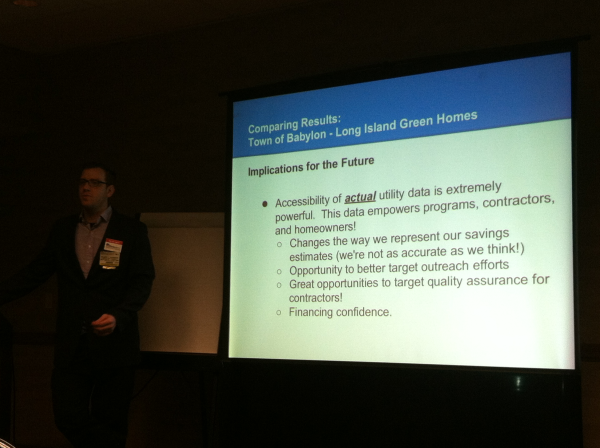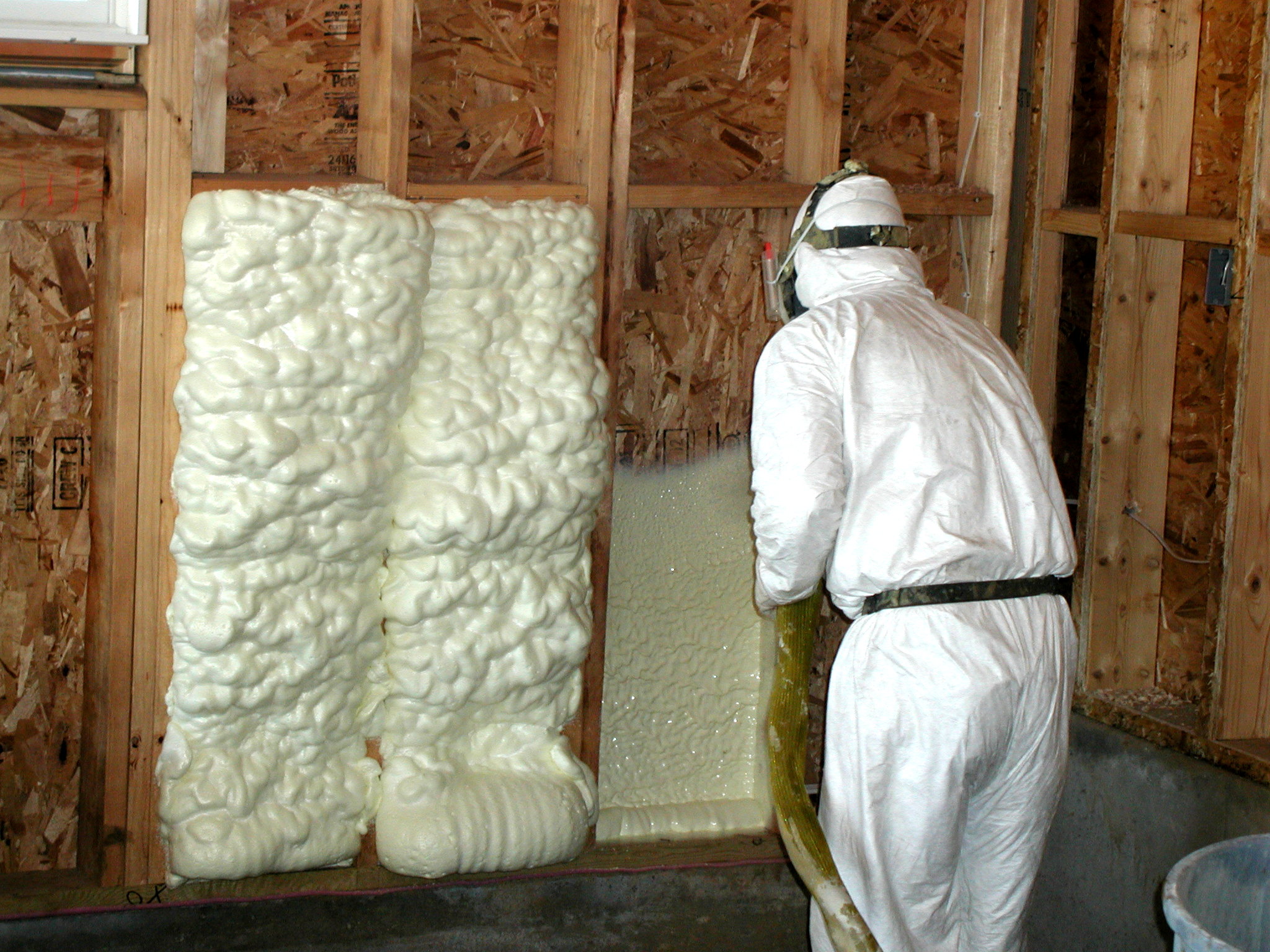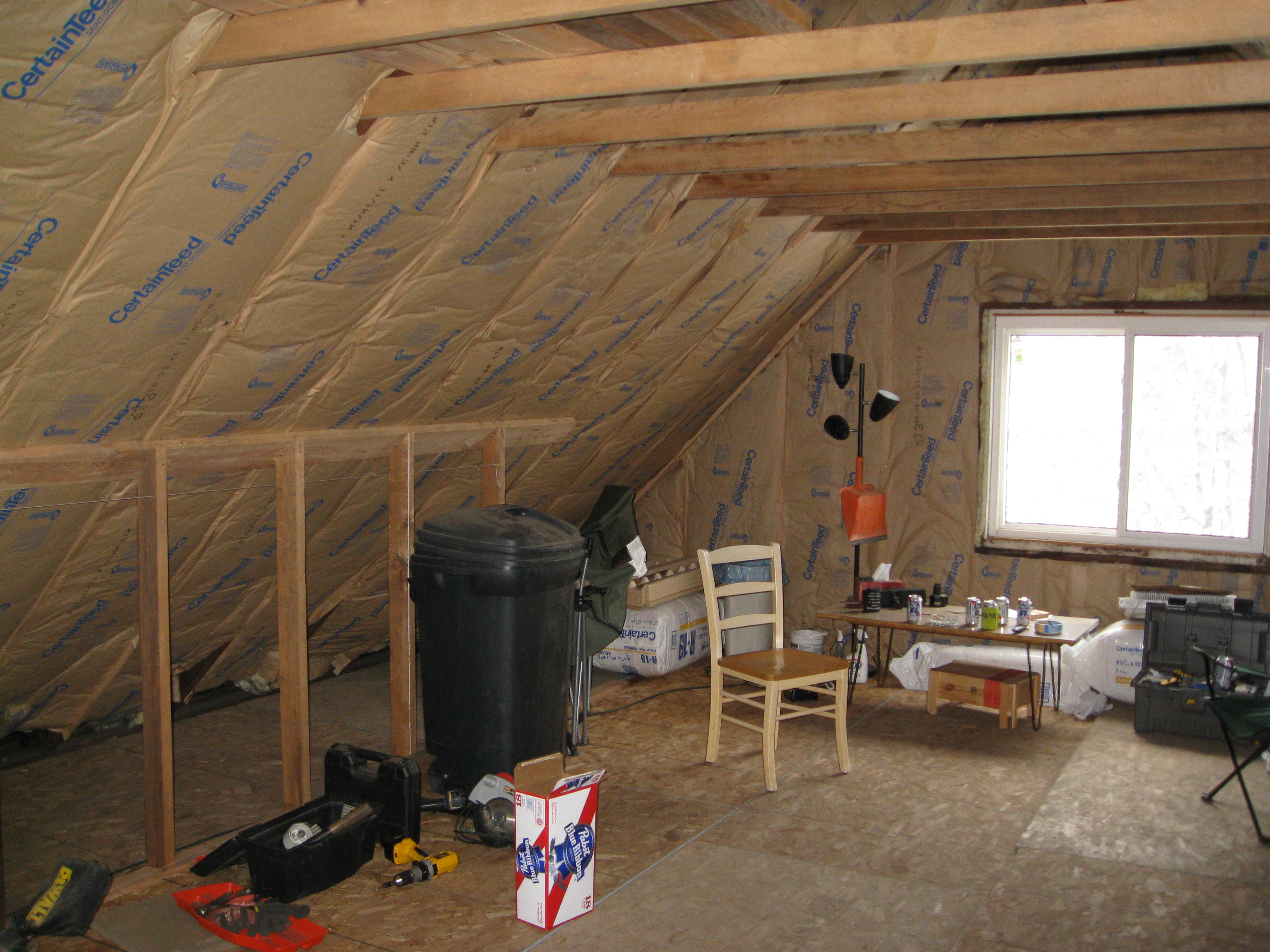Home Performance Is On The Cusp
And Now, Time for Something Completely Different!
Normally I write with homeowners in mind, this post is for my fellow Home Performance pros. If you’re a homeowner, you’ll probably be bored with this one! Pros, I’m wedging this into one post, so there’s a lot here!
ACI is a really wonderful conference that brings together all parts of the Home Performance industry, from utilities to weatherization agencies to contractors to energy auditors to incentive program managers.
It’s still a pretty small industry, so it’s incredibly cool that you get to meet all the big names and longtime experts by just sticking out your hand and saying hi.* I love that you can make suggestions to the very people that actually get stuff done! You can’t say that about many industries.
Here’s a rundown on my highlights.
Tuesday- Learn and Earn – Fix a Foreclosure
My first class was a half day from Dave Robinson and Larry Weingarten about renovating foreclosures to either flip or rent. If you have the bug at all, look up Dave’s excellent site, greenearthequities.com. He really likes doing his own houses because he gets to make all the calls of what gets done. I would call his methods a mild deep retrofit. Sometimes he wraps the outside with foam, but usually he just dense packs the heck out of them, air seals the heck out of them, and blows R-60 in the attic. He then makes them ‘pretty’ for the ladies with nice kitchens and baths, and finally fixes all the honey-do stuff.
My wife and I have been talking about doing this again, we live in our second foreclosure right now and we both like the process of fixing houses up. Were it not for a kid on the way in 6 weeks, we’d be doing it soon! Again, if this rings your bell at all, be sure to check out his website or go to one of his seminars. Larry also renovates foreclosures, but he prefers to do most of the work himself where Dave uses contractors a lot more, and Larry is pretty gutsy in some of his choices of houses! Both say to pick the ugliest, nastiest, cheapest one you think you can fix, because it will scare most people away.
Dr. Joe Talks Dense Packing Roofs
That evening, I noticed Joe Lstiburek of Building Science Corp was doing something on dense packing roofs. Wondering if he had seen any failures when dense packing sloped ceilings of Cape Cods, which we do sometimes, I went, not knowing what to expect.
To my surprise, Dr. Joe was looking for feedback on what failures the rest of us had seen in the field and what patterns we’d seen. As it turns out, it’s a relatively rare phenomenon that mostly seems to be related to complete lack of ventilation in cathedral ceilings in newer homes. Ironically, his worst failure was in Cleveland on a 4 year old house, which he repeatedly gave Cleveland a hard time for.** He showed an innovative fix where he cut the ridge off, covered it with Tyvek so it was still air tight, and then installed a ridge vent. This lets the water vapor out.
He also asked for feedback on code language so we can start the process of getting dense packing roofs added to building code. This furthered my respect for Joe. I already respect him greatly for coming up with really good thinking and principles, and even more impressively admitting when he’s wrong, then telling us why. That’s a good scientist! This session really impressed me, though, because he reached out to the industry for help in both experience and getting something done. Thanks for picking our industry, Joe! And answering my question about Cape Cods, which he has not seen a failure in. (Phew!)
If you’ve been living under a rock or are new to the industry, Joe’s website and research at buildingscience.com is the best in the industry, start there for pretty much any Building Science questions.
Wednesday – It Snowed… And Was 75 & Sunny In Cleveland – This Relates to Nothing
One of the Keys to the Industry – Proving Our Results and Getting Financing
Energy Savvy had a meeting in their suite after the day’s sessions with pretty much the whole software side of the HP industry, plus the DOE, plus a ton of numbers geeks (I say this very respectfully as a marketing and HP geek). I had followed Corbett Lunsford of Green Dream Group in and heard some very heartening things. The industry is working on a national registry that can easily pull data from energy audits, energy bills, retrofit before and after numbers, and (hopefully) post retrofit energy usage so we can actually see how well we’re doing. All the software makers are adjusting their software to be able to feed info easily into it. How cool is it to see such unity and selflessness? Thanks to Energy Savvy for both of those characteristics and for organizing the meeting.
This national Home Performance registry would allow all of us across the country to see what results others are getting for various projects (I often feel like I’m shooting blindfolded), but more importantly this is a key step to proving to the financial industry what we can actually deliver so we can get low-cost financing options. These loans will then be able to be resold. We can then sell payments – you don’t buy a $30,000 car, you buy a $350 lease payment or a $600 loan payment. A $20K retrofit is a lot more palatable as a $200 payment, especially if we can accurately predict their savings.
The Online Real World – Dinner With LinkedIn Friends

I’m pretty active in the RESNET/BPI Linked In group.*** David Butler of Optimal Building Systems, the moderator of the group, was kind enough to put together a group of about 12 of us to meet at Bayou Bob’s for some cheap beer and fried food. Normally we argue like crazy about all kinds of things (in a professional manner), and it was really cool to meet a bunch of the guys I’ve talked with for about a year now. Only at ACI!
I know I’m missing a few here, but here are some of the folks who joined us (in no particular order): Mike Rogers (OmStout Consulting), Corbett Lunsford (Green Dream Group), Steve Byers and Scott Doyle (Energy Logic), Ed Voytovich (Halco), Scott Suddreth (Building Performance Engineering), Robert De Vries (Nu Wool) on the left, Chandler Von Schrader (EPA) behind Scott S, Colin Genge (Retrotec) and Joe Medosch (RetroTec trainer) on the right. Missing are Paul Raymer (Heyoka Solutions) and Don Walker (Colorado Enenrgy Office), who left early, and Dale Sherman (EnergyWright), who arrived late. (Thanks to David Butler for filling out the names list.)
Thursday- What to Say and Not to Say
Suzanne Shelton of the Shelton Group impressed me with both scope of marketing knowledge and speed of speech (she says she’s the fastest talking southern lady you’ll ever hear). She said 3 big things that stood out to me.
The first is a perception that the average homeowner expects an 85% energy use reduction for $4000. Yikes! We have some education to do. Oops! The second thing she said is stop saying ‘educate’ and start saying ‘engage’ and ‘motivate’. Education is boring. Third, she is starting a website called do5things.com which gives small, gradual nudges to participants to do 5 or more energy efficiency upgrades to their homes. This is because it takes that many measures before they start to see and feel a difference. At 1-3 things they just feel frustrated and give up. This is a great thing that I look forward to watching!
Oh, and as an ad agency, they have unusually good looking stuff, being married to an award-winning graphic designer myself. Most ad agency stuff is mediocre design-wise, so this is refreshing.
An Idea Who’s Time Has Come: Energy Bill Guarantees
I’ve been hearing a lot about Andy Frank of Sealed Homes. I got a chance to sit down with him during a session. He is working on a system to offer energy savings guarantees, along with a very slick iPad app to show customers what they will save comparing several packages from basic to as much as a deep retrofit. Andy is quite the visionary on this, and be sure to check out his stuff, being married to a graphic designer, it’s gorgeous! Andy’s a very smart guy, so keep an eye on him.
Incidentally, as a software guy, he actually understood all the stuff in the Energy Savvy meeting and writes about it in his blog. (I made it in too!)
My House – Pecha Kucha
8 pros told us about their houses in a very cool format called Pecha Kucha where each presenter had 20 seconds each on 20 slides, or 6:40 each. You’d think they would be rushed, but it encourages brevity and many presenters actually waited for the next slide to come. We saw everything from a full bore Passive House level Net Zero home to a 3 year old house with serious water issues from Dan Perunko of Balance Point Home Performance to a house with no studs and a huge boulder in the living room from Gavin Healy of Balance Point to a PG&E guy’s (crap, I forgot to write down his name!) 10 year old ranch with a light-ish deep retrofit (attic and HVAC only) that achieved a 70% drop in usage (With no new wall insulation?!) to Peter Troast of Energy Circle’s Mallett historic restoration project. Chris Dorsi of Habitat X moderated and set up this session, which was one of the coolest presentations I’ve ever seen. I think it was because it was such a personal experience to see inside the lives of some of our own walking the walk.
Meet the Teach!
After the Pecha Kucha I was starved. I tend to talk a lot (I know, you’re shocked), so I hadn’t eaten anything but a danish and a few brownies before 9 PM. Chris Dorsi, who I hadn’t met yet, was also starving, so off to dinner we went! I remember reading Residential Energy by Chris and John Krigger when I first got into the industry and again during BPI and RESNET training. How cool to have dinner with the author of your textbook! (He even bought nachos.)
Dan and Gavin from Balance Point Home Performance, among others, joined us shortly thereafter and we chatted about old houses and fixing them, and the crazy work that Dan and Gavin do including their solutions for low-load heating systems (they use hot water heaters hooked to hydronic systems that convert to forced air.) Wow. I felt like a groupie hanging out with a bunch of rock stars. This was a pattern all week.
Friday- Post Retrofit Number Crunching

Have you heard of Will Schweitzer? You will soon. Just look for the tall red-headed guy, there’s not too many of them. Will works in Babylon NY, on Long Island. His town has had a VERY serious energy efficiency initiative going for 4 years now. Will and his team, including Andy Frank of Sealed, put together unusually comprehensive numbers on about 150 retrofits. Michael Blasnik helped out with weather normalization formulas. The thing he got that I would practically kill for is POST retrofit utility data. Babylon’s financing program offered to forgive one payment in return for at least 2 years of pre-retrofit bills and 1 year of post-retrofit bills – both electric and gas/oil. He and his team hand entered all those bills and compared them with projected savings.
Will came up with a 77% realization rate. While some who don’t know the numbers might think that’s low, it’s actually one of the highest rates in the country. A couple of very interesting conclusions from the initial month of analyzing the data: oil to gas conversions offer very high realization rates, nearly 90%. Air sealing, whether well or poorly done, generally came in right at the projected realization rate of 77%. In other words, if the cfm50 reduction was just OK, the realization rate was about the same as a kick butt realization rate. This was completely counterintuitive and directly contradicts Michael Blasnik’s findings for cold weather climates, so I’m interested to hear more about it as they pull the data apart.
The End – And the Beginning of the Tipping Point?

Sadly, all good things come to an end and it was time to go home. I’m only brushing the highlights of the experience.
I feel like our industry is on the cusp of a tipping point. We are all working like hell towards it. Our industry is easily worth $1 TRILLION in work at $10K/house for the 100 million units out there already, which is frankly conservative. We just have to get a few more things in place, and I think we’ll get there in the next 5 years or so. We need financing and a value put on energy efficiency work through MLS. Those 2 things open a lot of doors and eliminate a ton of barriers. Hmm, that sounds like another post. Thanks for reading, and please tell me your thoughts and your own experiences below!
PS Ever notice the Denver airport doesn’t have any roof insulation? Once you know Building Science, it’s tough to shut it off…
* I tend to stick my hand out and talk a lot. I once asked my dad if he remembered how old I was when I started talking. He replied, no, he didn’t remember, but he couldn’t remember me stopping since! So you’re not alone in your conclusion…
** HEY! Maybe some of us don’t like Canada! In fairness, Joe picked on Denver and Wisconsin a lot, too.
*** If you’re not in the group, get in there! You’ll learn a ton, and iron sharpens iron. If you think Linked In is ridiculous, you’re probably half right, but that also makes you half wrong. It’s a great place to connect with others in the industry and with customers. You can find out what is going on out there and even influence thinking in the industry. The groups are a great place to ask questions and solve your conundrums as well. Not to mention self-promote a little. Don’t forget to join the Building Science group too. And you can set the annoying emails to weekly. Just watch for a while, then jump in when you feel like it.
Get the HVAC Guide

It's free! Make buying a new furnace, air conditioner, or heat pump less stressful.










